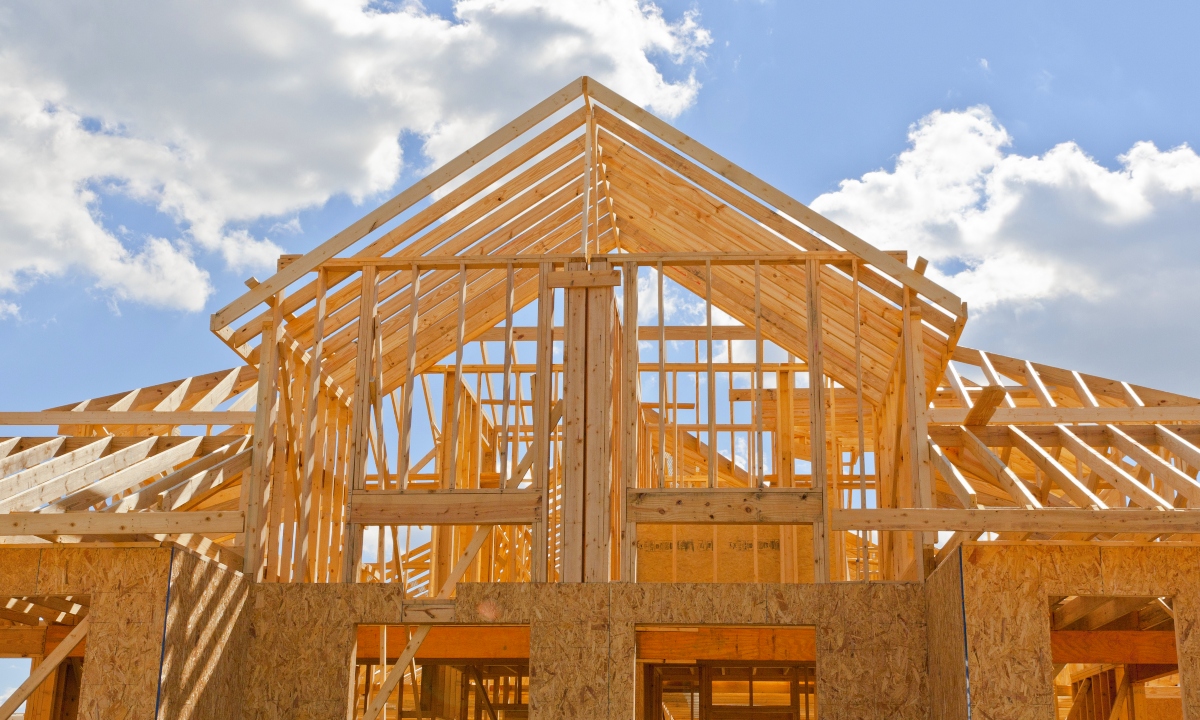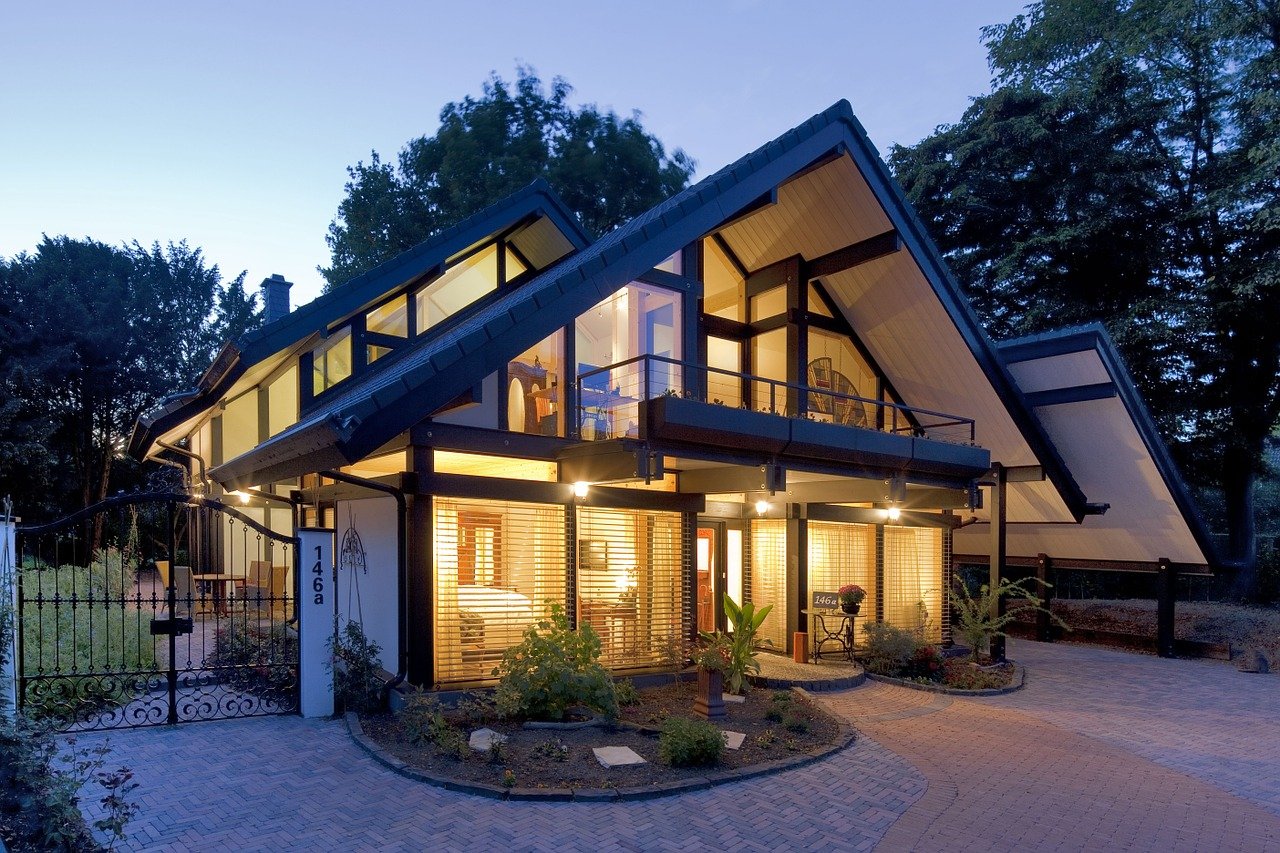Timber frame design and technology has come a long way in the last 40 years and Spain is slowly waking up to the benefits.
These days, a modern timber frame building can actually outperform a reinforced steel concrete frame (which is almost the only Spanish house construction method) in most circumstances.
While not totally unknown in Spain, timber frames are commonplace in northern Europe and North America and something you should certainly consider if you plan to build a house in Spain.
‘Wooden houses’ in Spain are stronger than you think
When using the term “timber frame” in Spain, people usually hear “wooden house”.
But “wooden house” might suggest something flimsy, quick and temporary (or maybe a cunning way to get around Spain’s strict planning regulations by claiming it’s a temporary structure). It might call to mind an A-frame house, designed to be put together quickly and cheaply from a kit.
A modern timber frame is far from a weak, short-term option. In fact, the term “timber structural system” is a much better way to describe the houses Eco Vida Homes helps build.
You may not know it, but you’ve probably been in many modern timber frame buildings in Spain without being aware that’s what they are. For example, most Travelodge hotels are built with modern timber frames.
To illustrate the point, here are some of the advantages of a modern timber structural system over a reinforced concrete frame…
Timber frames are faster to erect

While Spain typically enjoys a sunny climate and clear skies (especially in the Costas), bad weather does still happen and can cause serious delays for building projects. But with a timber structure, there’s no drying out time and no delays due to the rain.
As soon as the structure has been assembled, you can start fitting out the inside of the house almost immediately. And despite being a more efficient building material, timber frames are permanent structures that will last hundreds of years.
Pre-fabricated (modular) wooden houses are more efficient
Pre-fabricated wooden houses (or modular homes) in Spain are assembled in such a way that it leaves little room for error. Concrete structures need to be built from scratch onsite, which can often present issues and cause your project to stray off track.
Because the timber frame is pre-fabricated in dry, clean, factory conditions, engineering work can be more precise and fewer mistakes happen. Also, because they’re not built onsite, there’s vastly less waste to deal with, which will save a lot of money in its management.
Timber frames are far more eco-friendly than concrete
Well-managed forestry locks the carbon from the atmosphere into the wood, which actually makes a positive contribution to the environment.
Concrete structures, on the other hand, use vast amounts of water and fuel in their production and transportation.
Wood is a far more flexible material to build with
Wooden houses in Spain are easier to modify. There’s a lot less work involved in changing the internal layout during the project or further down the line. Because they’re adaptable, insulating can easily be fitted between panels and cables/tubes can be hidden with minimal fuss.
Wood is a poorer conductor of heat than concrete, so thermal bridges are less likely to occur, avoiding unnecessary condensation and reducing the amount of energy required to heat or cool the space.
And from a design point of view, there is total flexibility if you want to add a dome or curved shapes for something truly unique.
Lightweight timber frames make building work easier
By taking concrete out of the equation, your house in Spain won’t require the same level of foundational work. As this is a huge part of a typical home build, you’ll save a lot of time and money in the preparation stage.
As you can see, it’s not a simple case of which building material is cheaper. To get a better idea of the cost to build a house in Spain from wood versus concrete, get in touch so we can send you our Back Of The Envelope guide.
Common myths about building a timber frame house in Spain

Because of the stigma surrounding wooden houses in Spain, many people believe there are good reasons not to use them.
However, these notions are usually rooted in outdated technology and design methods and don’t represent the reality of building with timber structures today.
Mould and termites are often cited as reasons to avoid timber, but the argument really doesn’t hold any water. All timber is treated before being used, making it permanently protected against damp and insects.
Of course, wood is a highly flammable material that might lead people to think their house runs the risk of going up in flames, especially in the hotter regions of Spain like Marbella. But timber frames are actually more fire-resistant than concrete, as well as being more earthquake-resistant.
Thermal mass is another argument against timber frames in Spain. This is a good point, because concrete and brick buildings with a large thermal mass offer protection against high or low temperatures (providing the thermal mass is allowed to cool down/heat up overnight).
But if the house can’t shed its heat (in the summer, for example), a building with a high thermal mass becomes a liability. With good insulation and a well-thought-out, holistic design, you can insulate your timber building and protect yourself against temperature extremes. Modern timber frames can be enclosed in manufactured panels such as SIPs (structural insulated panels), which are simple to assemble, have lots of insulation and add rigidity to the frame.
If you want a modern look with clean simple lines and lots of glass, a modern timber frame might be the way to go for your house in Spain.
If you’d like an expert opinion as to whether a timber frame is right for your house in Spain, get in touch with Eco Vida Homes.
Author: John Wolfendale
Bio: John is a founder of Eco Vida and is passionate about bringing modern design and construction practices to Spain. He believes a home that is warm in winter and cool in summer is largely a matter of design and selective use of materials. He is British and a Chartered Surveyor with 20 years experience living and working in Spain.

